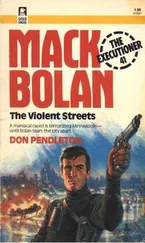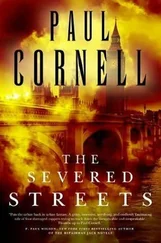Every homicide detective has a favorite story involving a murdered man’s last words. Many of these tales center on the code of the street and its observance even at life’s end. One involves the last moments of a West Baltimore doper, who was still talking when officers arrived.
“Who shot you?”
“I’ll tell you in a minute,” the victim declared, presumably unaware that he had about forty seconds left to live.
Having suffered deep stab wounds to the chest and face, one dying man claimed to have cut himself shaving. Another victim, shot five times in the chest and back, assured officers with his last breath that he would take care of the problem himself.
But perhaps the most classic dying declaration story belongs to Bob McAllister. Back in ’82, during his first weeks as a homicide detective, Mac had worked a long detail case with other detectives and had been a secondary on a few calls, but otherwise he was pretty green. In the hope that he’d learn from a veteran, they paired him with Jake “the Snake” Coleman, alias the Polyester Prince, a gravel-voiced, bantamweight detective of legendary proportions. And so, when the call came in for a shooting on Pennsylvania Avenue, Jake Coleman was out the door with McAllister in tow.
The dead man at Pennsie and Gold was named Frank Gupton. McAllister can remember the name without hesitation; he also remembers that the case is still as open as the day is long.
“He was alive when we got here,” said the first officer at the scene.
“Oh yeah?” said Coleman, encouraged.
“Yeah. We asked him who shot him.”
“And?”
“He said, ‘Fuck you.’”
Coleman slapped McAllister on the back. “Well, brother,” he growled, imparting an early lesson to the younger detective, “looks like you got your first murder.”
Now, standing out on Fremont Avenue, Garvey and McAllister both know enough about their victim, one Carlton Robinson, to say that whatever else he was, he wasn’t cut from the same cloth as Frank Gupton. He wanted to be avenged.
An hour after clearing the scene, both detectives are in a west side rowhouse, talking with Carlton’s girlfriend, who had packed the victim’s lunch pail and kissed him good-bye as he left to catch an early morning ride to work.
The interview is hard. The girlfriend is pregnant with Carlton’s child, and he was supporting her and talking about marriage. She knows that he usually caught his ride to work at Pennsylvania and North and she knows the name Warren Waddell as a co-worker who sometimes caught the same ride. But Garvey and McAllister have only a few minutes to talk with her before the sound of a ringing telephone fills the small apartment. The hospital, thinks Garvey, already aware of what the news will be.
“No,” she wails, dropping the receiver on the floor and falling into a girlfriend’s arms. “No, goddammit. No…”
Garvey stands up first.
“Why is this happening to me?”
Then McAllister.
“Why…”
Both detectives leave their cards in the kitchen and find their own way to the door. Everything so far-from the lunch pail to Carlton’s willingness to name his killer to his girlfriend’s tears-tells them they have a real victim here.
A few hours later, at a doughnut shop off Philadelphia Road in eastern Baltimore County, the site manager of Precision Concrete confirms as much: “Carlton was just a great guy, a really great guy. He was one of my best guys.”
“And Waddell?” asks Garvey.
The manager rolls his eyes. “I mean, I’m amazed he actually killed him. I’m amazed he did it, but I’m not surprised he did it, you know?”
Warren was crazy, the manager says. He came to work every other day with a semiautomatic pistol tucked into his jeans, showing off his flash money and telling everyone about how good his drug connections were.
“Did he have drug connections?”
“Oh yeah.”
It was hard getting Waddell to do work out at a site, the manager says. He’d rather spend time telling everyone else on the crew how dangerous he was and how he had killed people before.
Well, thought Garvey, listening to the manager ramble on, that much was true anyway. Back at the office an hour ago, the detectives had run Waddell’s name and come up with an impressive sheet that culminated in a second-degree murder conviction twelve years ago. In fact, Waddell had just made parole.
“He’s a mental case,” says the manager, a sawed-off billy with dirty blond hair. “You know, I’d be scared to deal with him sometimes… I can’t believe he killed Carlton.”
For the regulars in the morning rush at the Dunkin’ Donuts counter, the conversation is a startling diversion. The manager chose the spot because it was near the day’s construction site; now, the businessmen at the counter are ordering refills and staring over their newspapers at the spectacle of two plainclothes detectives working a murder.
“What was Carlton like?”
“Carlton was a real good worker,” says the manager. “I’m not sure, but I think it was Carlton who got Waddell his job with us. I know they came to work together all the time.”
“Tell me what happened yesterday at work,” says Garvey.
“Yesterday,” says the manager, shaking his head. “Yesterday was just a joke. They were joking around, you know, teasing Warren.”
“What about?”
“Different stuff, you know. The way he acted and how he didn’t do any work.”
“Was Carlton teasing him?”
“They all were. They called him a dickhead and he didn’t like that.”
“Why’d they call him a dickhead?”
“Because, you know,” says the manager, shrugging off the question, “he’s a dickhead.”
Garvey laughs.
At one point, the manager tells them, Waddell flashed his semiauto and declared cryptically that tomorrow was election day and people always get killed on election day. Garvey has heard the summer heat wave theory and the full moon theory of inner-city mortality, but never the election day postulate. This is a new one.
“Tell me about this gun.”
The manager describes the weapon as a 9mm semiauto with a clip of eighteen rounds. The casings at the scene were.38, but both Garvey and McAllister know that most people can’t tell a.38 from a 9mm on first sight. Warren was proud of the gun, the manager says, recalling that Waddell had explained that he always mixed hollow-point and roundnose ammunition together in the clip, alternating between the two. “That’s the way to kill a man,” Waddell told anyone willing to listen.
That, too, matches up when both detectives return to the city to watch an assistant medical examiner pull bullets out of Carlton Robinson’s body. It is a slow morning on Penn Street-a double suicide or murder-suicide from Montgomery County, another suicide from Anne Arundel, two probable overdoses, an unexplained collapse, and a ten-year-old girl run down by a truck. The detectives don’t have to wait more than an hour to confirm that half the recovered slugs are hollow-point, the rest, standard roundnosed ammo.
The ballistic evidence is tinged with irony. Not only is November 9 election day in Maryland, it also happens to be the same day the state’s vaunted Saturday Night Special law takes effect. Passed by the state legislature in the spring despite a $6.7 million lobbying effort backed by the National Rifle Association, the law set up a review board to identify and prohibit the sale of cheap handguns in Maryland. Touted as a victory over gun control opponents and a counterweight to handgun violence, the law is in truth a largely meaningless exercise. Not since the 1970s have cheap handguns been responsible for more than a handful of the city’s homicides; nowadays even teenagers are walking around with semiautomatics tucked into their sweatpants. Smith & Wesson, Glock, Baretta, Sig Sauer-even the dickheads of the world, Warren Waddell included, are carrying quality weapons. And though Maryland’s landmark gun control law is the pride of its political leaders, it has arrived about fifteen years too late.
Читать дальше












